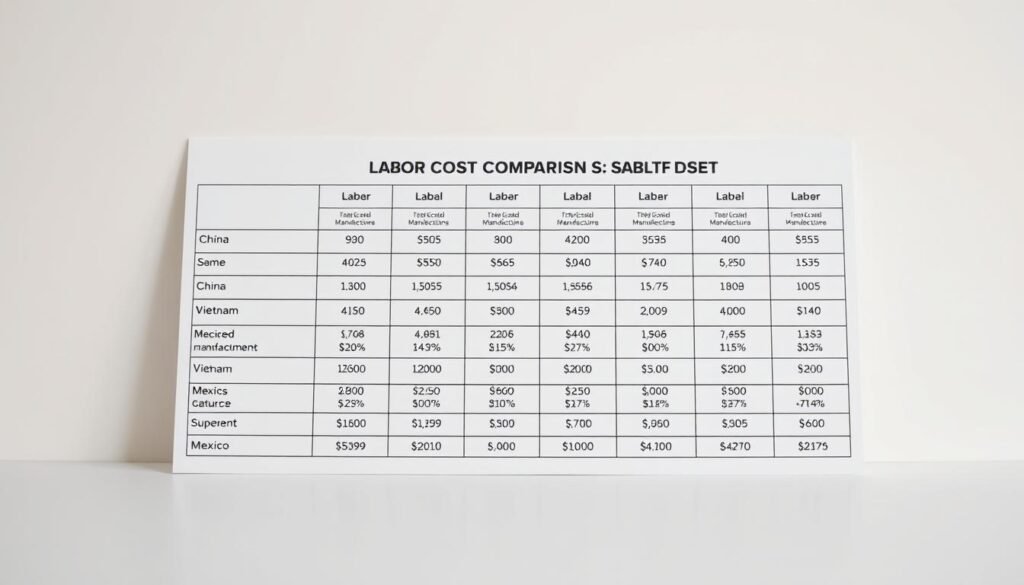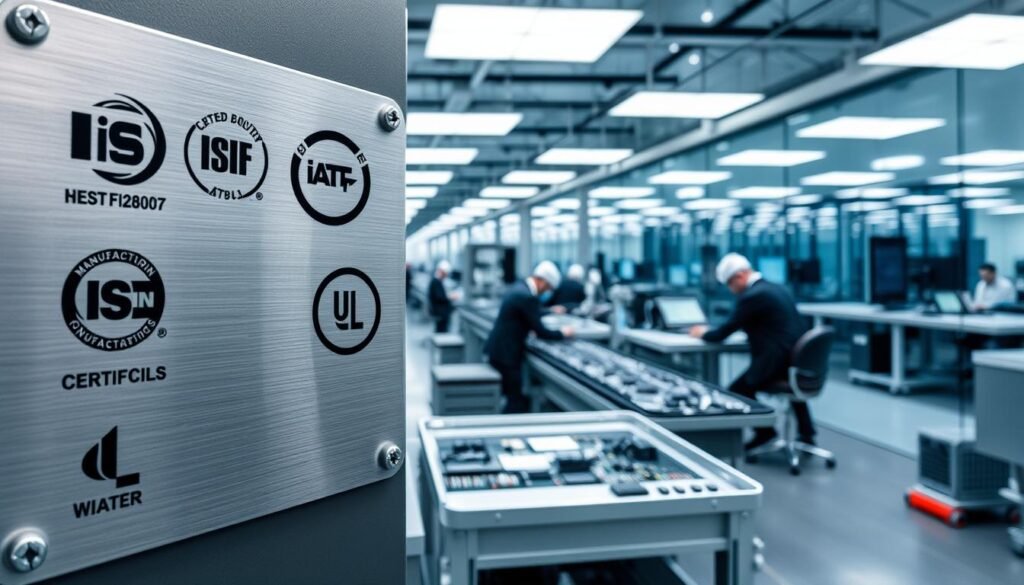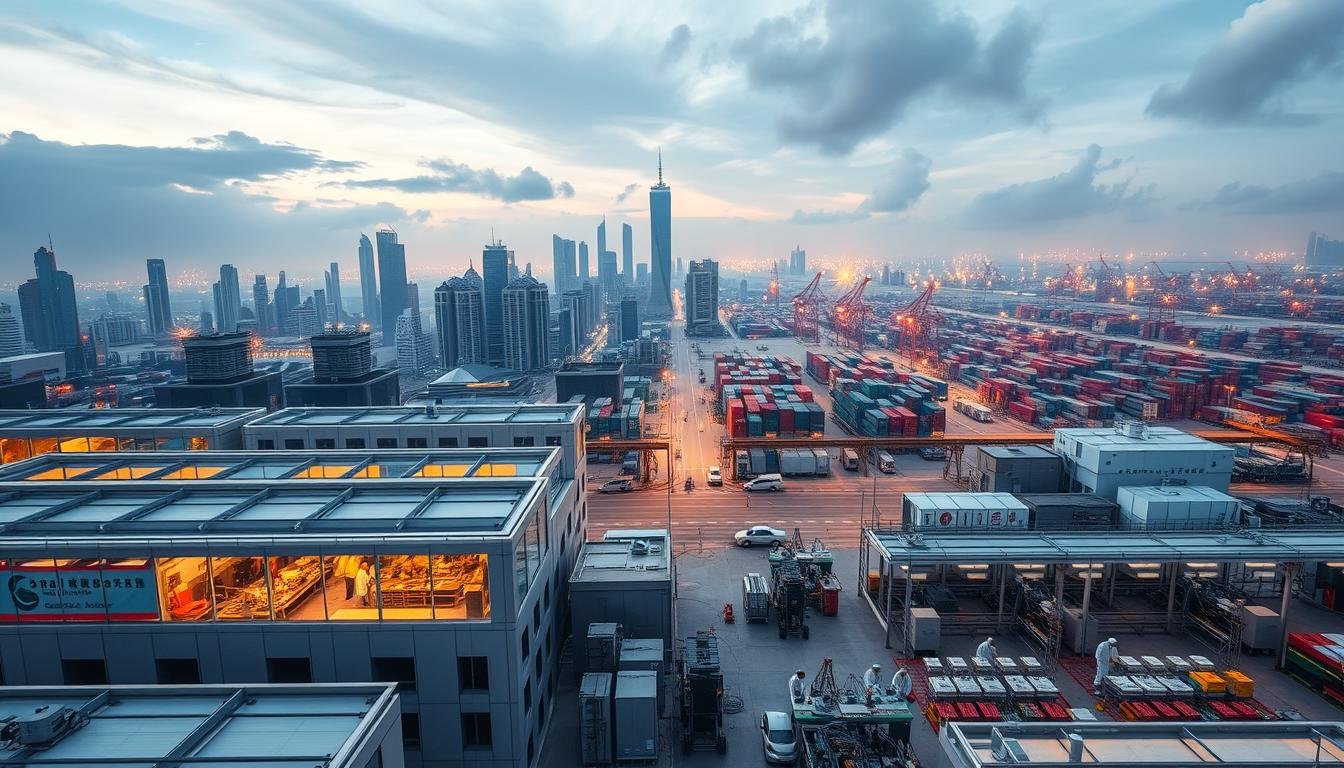What if your electronics production strategy is costing you more than just money? In today’s shifting global landscape, choosing where to build your products impacts everything from profit margins to market responsiveness. While many businesses focus solely on labor rates, we’ve identified seven hidden factors reshaping how companies evaluate production hubs.
Geopolitical tensions and supply chain realignments have transformed traditional decision-making models. Trade policies now influence lead times as much as factory capabilities, while quality expectations rise alongside consumer demands. We analyze how modern businesses balance technical expertise with logistical agility across three strategic regions.
Our research shows regional advantages extend far beyond basic cost calculations. Proximity to component suppliers can reduce inventory buffers by 18-24%, while certification compliance affects time-to-market more dramatically than assembly speeds. We break down critical metrics like workforce upskilling rates and infrastructure maturity that often get overlooked in location analyses.
Key Takeaways
- Geopolitical factors now rival production costs in location decisions
- Supply chain resilience requires evaluating regional supplier networks
- Quality certifications impact market access across industries
- Shipping reliability varies significantly between regions
- Intellectual property protections differ by jurisdiction
- Workforce technical skills affect production scalability
- Tariff structures influence total landed costs
Introduction to the PCBA Manufacturing Landscape
Decades-old manufacturing playbooks are becoming obsolete in today’s dynamic market. Where companies once relied on single-region production, modern strategies demand agile multi-hub approaches. The industry now faces a pivotal moment – adapt or risk eroded margins and operational vulnerabilities.
Context for U.S. Businesses
American enterprises confront a dual challenge: maintaining cost efficiency while building crisis-resistant operations. Labor expenses in traditional Asian hubs have surged 285% since 2004, forcing reevaluation of long-term partnerships. Recent tariff implementations add 15-25% to landed costs for some businesses, accelerating relocation timelines.
Three critical shifts define current strategies:
- Diversification beyond single-country dependencies
- Priority alignment between cost and risk mitigation
- Strategic use of trade agreement networks
Market Trends and Global Shifts
The manufacturing sector’s growth now concentrates in regions offering balanced value propositions. While Southeast Asia attracts tech-focused investments, North American partners gain traction through:
- 4-6 week shipping advantage over overseas suppliers
- Stricter IP protection frameworks
- Alignment with Western compliance standards
Emerging economies account for 38% of new electronics production contracts since 2022. This redistribution reflects companies’ needs for supply chain redundancy and tariff avoidance strategies. Nearshoring initiatives particularly benefit businesses requiring rapid design iterations and tight quality control loops.
Comparing PCBA Manufacturing in China vs. Vietnam vs. Mexico: Balancing Cost, Quality, and Reliability
Hidden operational factors now dictate success in global electronics production. While labor rates remain important, regional capabilities create distinct value propositions for technical operations.
Established Asian hubs maintain dominance in high-volume output. Mature infrastructure supports complex assemblies, but wage increases and trade uncertainties now challenge pure cost-driven strategies. Technical workforces remain unmatched for precision tasks, though lead times face new pressures.
Southeast Asian partners offer accessible entry points for smaller batches. Coastal logistics networks enable rapid material transfers from neighboring component giants. However, technical limitations emerge with advanced designs requiring specialized equipment or certifications.
North American proximity reshapes landed cost calculations. Hourly rates here undercut traditional leaders by 15-20%, while reduced shipping durations improve inventory turnover. Cross-border partnerships simplify compliance with regional quality standards and IP protections.
Three critical differentiators emerge:
- Scalability thresholds for production volumes
- Access to certified component suppliers
- Total timeline from prototype to market
Smart companies now deploy multi-hub strategies. Basic assemblies flow through cost-efficient Southeast Asian partners, while complex builds utilize established technical ecosystems. Regional specialists handle final testing and distribution near target markets to ensure quality compliance.
Supply Chain and Labor Cost Comparison

Strategic production decisions now hinge on two critical factors: workforce expenses and component accessibility. Our analysis reveals how regional disparities create unique value propositions for technical operations.
Labor Cost Trends Across Regions
Wage patterns show dramatic shifts over the past decade. Chinese production salaries surged 285% since 2004, while Vietnam emerged as a low-cost alternative at 1/6th of China’s rates. Mexico positions itself as a middle-ground option with wages 20% below China’s baseline.
Emerging markets present varied opportunities:
| Country | Monthly Labor Cost | Key Advantage |
|---|---|---|
| Vietnam | $297 | Lowest operational expenses |
| Mexico | $1,580 | Nearshoring benefits |
| China | $2,840 | Technical expertise |
| India | $269 | Entry-level production |
Impact of Supply Chain Diversification
Component sourcing capabilities significantly influence total costs. While China maintains robust supplier networks, Vietnam’s dependence on imported materials creates logistical challenges. Mexican partners leverage USMCA trade agreements for tariff-free North American component access.
Three critical considerations emerge:
- Inventory buffers shrink 18-24% near supplier clusters
- Geopolitical risks increase with single-region dependence
- Certification compliance affects supplier eligibility
Modern manufacturers balance cost savings against supply chain resilience. Our findings show companies accepting 7-12% higher labor expenses for diversified sourcing options that ensure production continuity.
Quality, Production Capacity, and Manufacturing Reliability

Operational excellence requires more than technical specs – it demands alignment between capability and consistency. We evaluate how regional approaches to quality assurance shape manufacturing outcomes for global enterprises.
Quality Certifications and Standards
Certification availability directly impacts market access. Established hubs maintain rigorous compliance frameworks, with ISO and UL certifications being table stakes for complex electronics. Third-party verification processes vary dramatically – some regions offer streamlined access through independent labs, while others require extensive documentation.
Manufacturing cultures prove equally critical. Certain operations employ proactive quality halts when detecting component irregularities, minimizing rework costs. This approach contrasts with volume-focused models prioritizing throughput over defect prevention.
Production scalability reveals another layer of differentiation. While some locations handle multi-million unit batches effortlessly, emerging sectors face capacity ceilings. Technical workforce availability often determines whether companies can ramp operations without compromising delivery timelines.
Three operational realities define modern manufacturing strategies:
- Certification infrastructure maturity affects time-to-market
- Preventive quality systems reduce post-production defects by 37-41%
- Regional component ecosystems influence technical capability limits
Smart manufacturers match product complexity with regional strengths. High-precision applications thrive in certified environments with robust QA processes, while simpler assemblies benefit from cost-efficient emerging hubs. The right balance ensures reliability without overengineering solutions.
Risk and Regulatory Considerations in Manufacturing
Global production strategies now face unprecedented regulatory complexity. Businesses must balance operational efficiency with compliance obligations that vary dramatically across borders. Three Asian nations recently updated export control frameworks, while North American partners streamline processes through modern trade agreements.
Export Regulations and Trade Laws
Recent legislative changes create new hurdles for technical operations. Vietnam’s Decree 69 mandates special permits for 32 categories of electronics materials – a requirement catching 43% of foreign firms off-guard in 2023 audits. Mexico’s USMCA alignment simplifies component movement but requires strict origin documentation.
| Country | Key Regulation | Impact |
|---|---|---|
| Vietnam | Decree 69/2018/ND-CP | Extended permit requirements for 18% of common components |
| China | Tech Transfer Restrictions | Added 6-8 weeks to approval processes |
| Mexico | USMCA Chapter 4 | Reduced customs delays by 72% |
Political and Economic Stability Factors
Currency volatility now impacts 1 in 3 manufacturing contracts across emerging markets. A Southeast Asian electronics CEO recently noted: “We budget 15% contingency for regulatory changes – it’s become standard practice.” Government policy shifts in key regions have altered tax incentives for 89% of foreign-operated facilities since 2021.
Intellectual property protections remain fragmented, with enforcement rates varying from 38% to 94% across surveyed countries. Businesses handling proprietary designs should prioritize regions with established legal frameworks and stable administrative processes.
Emerging Trends and Shifts in Global Electronics Manufacturing
Electronics production strategies are pivoting from cost-centric models to resilience-driven ecosystems. Where companies once chased the lowest bids, they now prioritize supply chain durability and technical adaptability. This reversal of decades-long offshoring practices reflects lessons from recent disruptions – 68% of businesses now maintain production in at least two regions.
Automation bridges the gap between high-wage and low-cost regions. Collaborative robots and AI-driven quality systems enable smaller facilities to match the precision of established hubs. One industry leader noted: “Our Mexican plant now achieves 99.2% first-pass yield rates – equal to our Shanghai operation.”
Shorter product cycles demand radical agility. With 95% of new product introductions failing due to scaling challenges, manufacturers need partners who can pivot within weeks. Strategic diversification of production bases becomes critical when launching untested designs.
Sustainability metrics now influence site selection. Transportation emissions account for 18-22% of total carbon footprints in electronics. This drives interest in regional suppliers – a shift accelerated by carbon tax implementations in key markets.
Successful firms blend cost efficiency with operational flexibility. Hybrid approaches use automated Asian hubs for high-volume components while leveraging nearshore partners for final assembly and rapid distribution. This model cuts lead times by 34% while maintaining competitive margins.
Strategic Advantages of Nearshoring and Reshoring Options
Proximity creates power in modern production strategies. For U.S. enterprises, regional partnerships offer more than geographic convenience – they deliver operational resilience. We see businesses transforming challenges into competitive edges through smart location decisions.
Benefits for U.S. Companies
Shorter supply chains reduce lead times by 40-60% compared to overseas alternatives. This proximity enables faster design iterations and tighter quality control loops. Companies gain real-time oversight of production while minimizing inventory buffers.
Three critical advantages emerge:
- Enhanced cash flow from reduced capital tied up in transit
- Simplified compliance with regional sustainability mandates
- Stronger IP protections through localized legal frameworks
Modern solutions leverage nearshoring to balance cost efficiency with risk mitigation. Businesses using North American partners report 22% fewer supply disruptions annually. These operations also achieve 18-24% lower carbon footprints through optimized logistics networks.
The strategic shift toward regional manufacturing isn’t about abandoning global partnerships. It’s about building agile, crisis-resistant ecosystems that support sustainable growth. Smart companies now blend offshore scale with nearshore responsiveness to maximize value.
FAQ
What drives U.S. companies to explore alternatives to China for electronics production?
How do labor rates in Vietnam and Mexico compare to China’s manufacturing sector?
Which certifications indicate reliable PCBA manufacturing quality?
How does nearshoring to Mexico benefit U.S. electronics brands?
What risks accompany manufacturing in emerging markets like Vietnam?
Are environmental regulations affecting factory selection?
How crucial is IP protection when choosing a manufacturing country?
Can suppliers in these regions handle high-mix, low-volume PCBA projects?
About The Author
Elena Tang
Hi, I’m Elena Tang, founder of ESPCBA. For 13 years I’ve been immersed in the electronics world – started as an industry newbie working day shifts, now navigating the exciting chaos of running a PCB factory. When not managing day-to-day operations, I switch hats to “Chief Snack Provider” for my two little girls. Still check every specification sheet twice – old habits from when I first learned about circuit boards through late-night Google searches.
